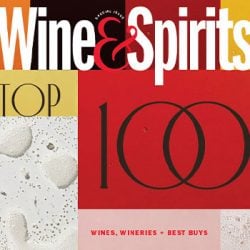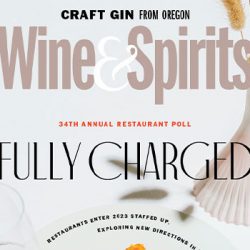

While he was researching his book, Finding Meaning in Wine, Michael Sinowitz interviewed me about blind tasting, and I invited him to join one of our panels. His extensive consideration of wine criticism, in a parallel to literary interpretation, led me to read the book a second time, to try and understand why it was so affecting to me, personally, aside from the role he gave me in the text.
So, I scheduled some interviews with Sinowitz, turning the tables, and have presented excerpts from them on our website. His insights into the way we talk about wine helped me understand some things about my own goals. It occurs to me that I have used my career in wine to make a political statement, not to influence policy, but perhaps to influence action. This is not to assign some grandiose achievement to my own career, just to explain some of the emotional intensity I bring to my work. I came to wine with an interest in writing and a passion about ecology. Having lost hope in any ability to impact environmental consciousness through government action, I took a detour, as I found that I had a talent in articulating what I was tasting when organizing blind panels for this magazine.
Over the years, I worked with our team to develop a tasting system that is driven by my beliefs—in fairness, transparency and, if my hunch was correct, that wines grown with care and without chemicals would taste better and be more identifiably tied to a place than those made through industrial practice: That no matter how precise and deliciously rich a well-worked wine might be, its value is limited to that of a beverage, while a wine grown through careful observation and made without a lot of intervention might create a greater value proposition.
If I could get peers to rally around the idea that there is value in a wine’s clarity of expression of a place, then the financial return on making such wines would encourage more producers to focus on clarity of site or regional expression, which demands, in turn, that they treat their land with care and respect. I must have believed this would be a powerful tool for environmental change in agriculture, a subliminal, or not so subliminal, political message—the same message many drinkers of “natural wine” would like to encourage.
You’ll find a review of Sinowitz’s book in this issue, along with reviews of books by other authors who have, at one time or another, collaborated on this magazine project with me—Tara Q. Thomas worked with Jancis Robinson OBE MW and Julia Harding MW on the latest Oxford Companion to Wine, and Ray Isle, now the executive wine editor at Food & Wine, profiled growers he has visited in The World in a Wine Glass—a compendium of growers who live on their land (he calls out their farming practice, mostly organic or biodynamic, in the heading under their name). It’s great to see their exceptional talents reaching broad audiences. Here at W&S, we continue to focus on a more specific audience, people whose interest is in discovering new wines, whether professionally, as guides to wine drinkers, or personally, as wine drinkers themselves, looking for wines that speak of a place.
Corey Warren considers how those places are changing—and how winegrowers are adjusting—in his article, Survival Vines. And Alissa Bica has been working to take our spirits coverage in a similar direction, exploring artisanal spirits with ties to the land. She has two articles in this issue—one from her visit to Peru, where she researched Pisco. For the other—coverage of non-alcoholic spirits for Dry January, a first for W&S—we went all in: Alissa spoke with mixologists about this burgeoning category of drinks, and gathered recipes we look forward to trying well before the New Year. Whether you celebrate with Champagne, Barolo, cabernet or an alcohol-free cocktail…this issue is packed with delicious drinking for your December feasts.
Joshua Greene is the editor and publisher of Wine & Spirits magazine.
This story appears in the print issue of Winter 2023.
Like what you read? Subscribe today.




















